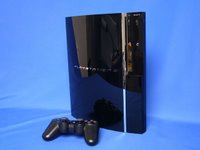Spam e-mailers have targeted Patriot Scientific, which has a deal on the Charles Moore patent pool. The spam emails highlight the deals signed by Intel and AMD to license the patent pool.
The Moore Microprocessor Patent (MMP) portfolio is named after Charles Moore, the inventor of the FORTH programming language, rather than Gordon Moore of Intel. While some of the first RISC processor patents come to an end this year, the Moore patents date from 1989 and will run until 2012 at the earliest.
Although they have been around for over 15 years, the Moore patents have had a chequered history. Up until last year there was a dispute on who owned them – a company called the TPL Group in Cupertino, California, where Moore is chief technology officer, or Patriot Scientific in Carlsbad, California.
That was resolved last June, when the two agreed to co-operate, and since then TPL has been marketing the portfolio through its subsidiary Alliacense. These have been taken up by companies such as Intel and AMD, as well as Hewlett Packard, Casio and in early June, Sony.
"Patriot Scientific has undergone tremendous positive change in the last year," said David Pohl, Patriot Scientific chairman and CEO. "The shift away from developing and marketing our own Ignite microprocessor to focus primarily on revenue from the licensing of our patent portfolio has bolstered the financial strength of the company. We are excited about the next phase of our plan that has already begun in which we are evaluating opportunities to diversify our revenue stream through possible joint ventures or acquisitions, all with the goal of increasing shareholder value."
Companies such as ARM and Tensilica are less enthusiastic. “It’s a very particular form of high speed clocks which people have said are very rarely used in actual designs,” said Chris Rowen, CEO of Tensilica and one of the founders of MIPS Technologies who worked on the original RISC technology at Stanford University. “I don’t think these patents are very fundamental at all.”
“We spent a lot of effort looking at the patents and we are quite happy that we don’t infringe,” said Mike Muller, chief technology officer and one of the founders of processor designer ARM.
But the spam e-mails are a classic pump-and-dump, where existing shareholders are trying to shift shares that are usually worthless by increasing the publicity around the company. Although the shares stand at $0.71, the company saw an income of $6m last quarter and income of $28m last year. So it seems an odd candidate for the pump-and-dump.



